When we decided to go to Myanmar we had quite high expectations. A few friends had mentioned that they considered it the most authentic country in South East Asia. And we were not disappointed. During the 3 weeks we spent there in January of 2016 we knew amazing places, both in terms of architecture and natural beauty, we found a very rich culture not so globalized yet, a less massive tourism than its neighbouring countries, but at the same time we could easily travel there and have all necessary services (in terms of transport, good communication in English and internet which was slow but easy to find). We also met amazing people, both native and travellers, who helped to make this experience even more special.
Our trip started in Yangon, its biggest city. With more than 4 million inhabitants this is a massive city which feels like a much smaller one, it seems to have stopped in time. In the city center we could see old and badly conserved buildings, some were abandoned, lots of garbage on the street and also poverty. You could also listen to the sound of men spitting a red liquid, a kind of tobacco, on the floor all the time. It was a big culture shock and we needed some time to get used to the ugly side of things and start seeing the beauty of the place.
Yangon is also quite safe and is home of Shwedagon Paya, the most impressive temple of the country. According to the Lonely Planet guide the temple is “adorned with 27 metric tons of gold leaf and thousands of diamonds and other gems”.


It’s interesting to sit there and observe the devotion of its visitors. If you have already been to northern Thailand you might have noticed the importance of the Buddhist religion there, but in Myanmar it’s even stronger and more evident. There are hundreds of temples even in the smallest towns. All boys under 8 years old become monks (novices) for about a year and after that, when they reach adulthood, they should become a monk again for some time. Although girls are not expected to do that, many choose to follow this same path. Men wear red clothes and women wear pink. In the last city we visited, Mandalay, we were able to visit a school and see many children with their monk outfits, they were really lovely.



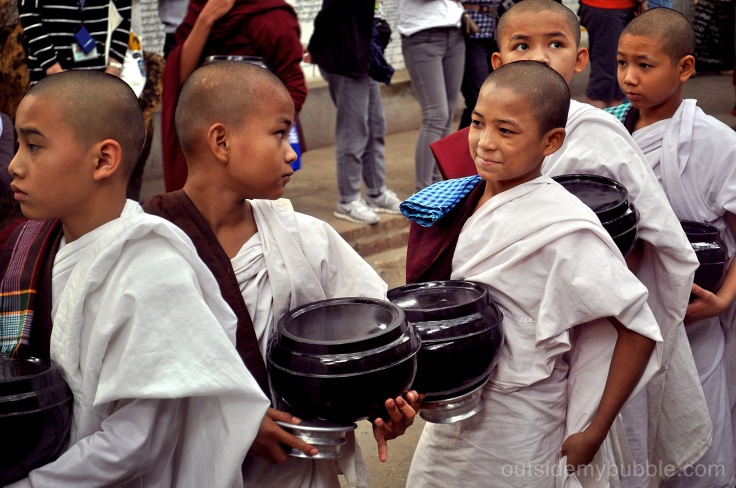

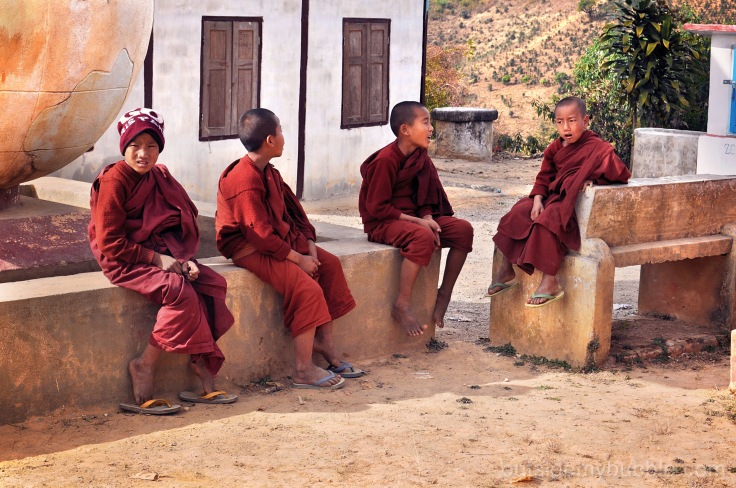
Something that caught our attention was the way people dress, much less westernized than other countries we visited. Women are very elegant, most of them dress tailor-made blouse and long skirt sets made from the same fabric. Another curious thing is that all women use a light beige cream on the face (as moisturizing cream and sun protector).

Men usually wear a kind of long skirt (longi) . They use it formally, with long-sleeved shirt to go to work, but also with T-shirts. In some temples men who are not covering their legs can only enter if they rent a longi.
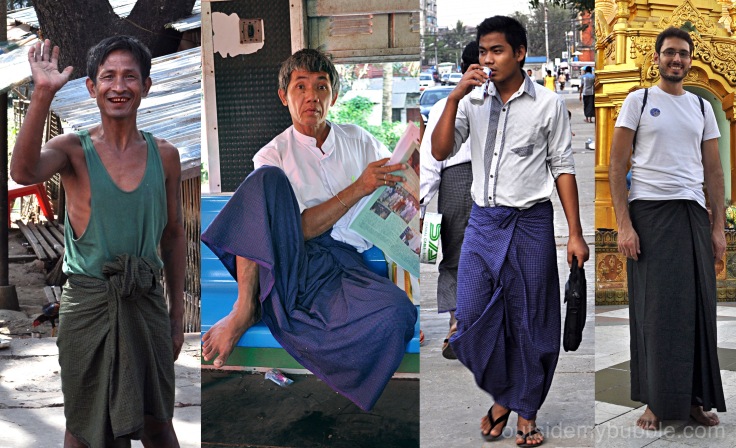
You don’t see many ready clothing stores on the streets, instead, you can find hundreds of seamstresses in the Yangon market (Bogyoke) who offer their services at a very affordable price (a set of blouse and skirt could cost only 15 dollars) .
Apart from visiting the main temples of the city, we made other interesting activities such as traveling with the circular train line and visiting the Kandawgyi Lake. Both things are very interesting to observe and learn about the daily life of Myanmar people.

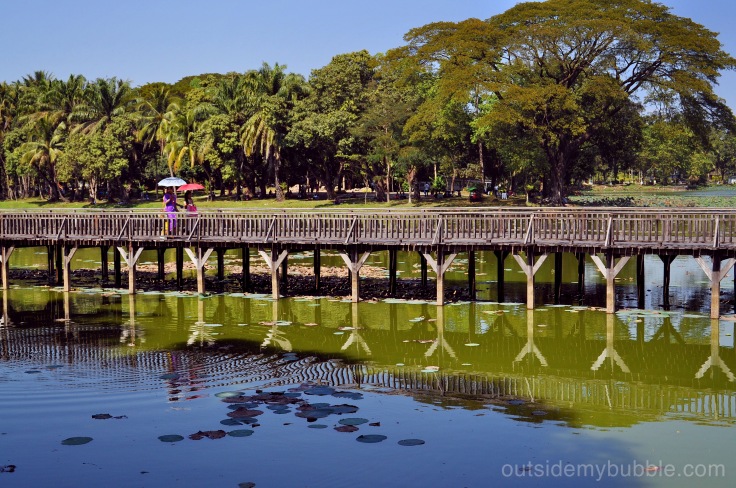
From Yangon we headed towards the interior of the country, to a small town in the mountains called Kalaw which was the city where we would start our 3 day trek to Inle Lake. Kalaw is a small nice town and a good place to rest for 1 or 2 days. There we visited a temple located inside of a cave, it seems to be a good place to meditate. The man who takes care of the temple was very affectionate haha, he hugged us both and asked to take a picture.


The trekking to Kalaw was undoubtedly one of the most amazing experiences we’ve ever had, and that was when we fell in love with the country. It was 3 days and 2 nights passing through amazing landscapes, forests and fields of different shades, small tribe villages that speak their own dialects, sleeping in bamboo houses and listening through our guide to stories about Myanmar’s customs and its past, having interesting conversations about the high expectations regarding the first democratic government elected by the people which has just been established in the country after 50 years of military rule.
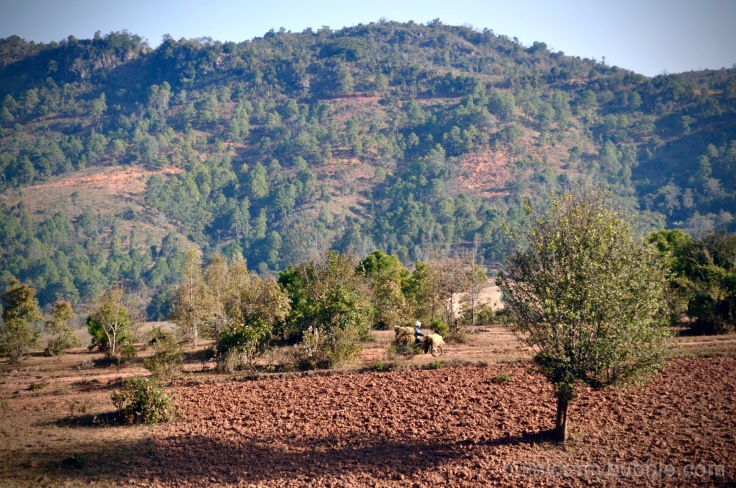
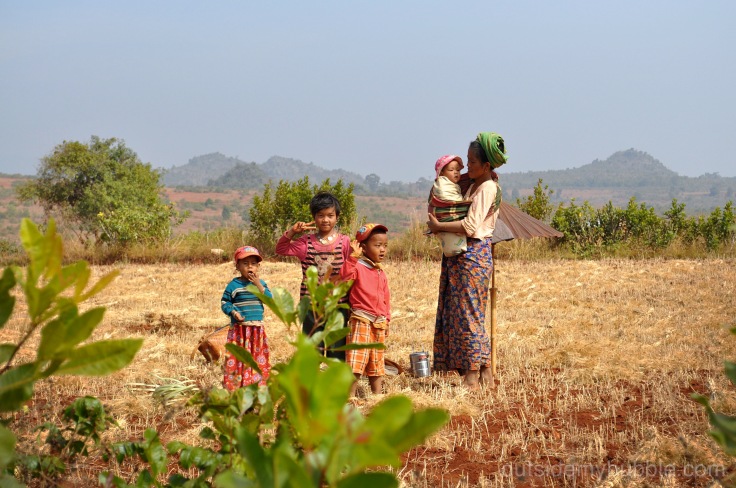

We saw photos of Aung San Suu Kyi, leader of the elected party and winner of a Nobel Peace Prize in 1991, in many restaurants and stores we visited across the country.
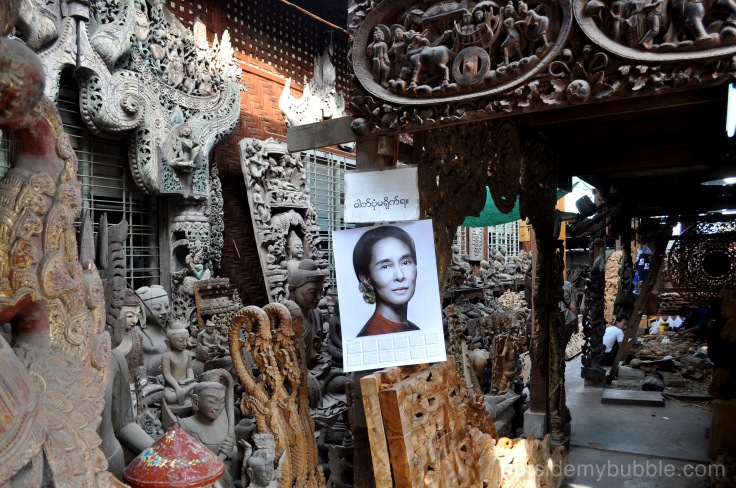
Our final destination was Inle Lake and its floating city. We found a guesthouse in town and the next day we joined a couple of lovely Canadians we met on the trek, Asta and Leslie, for a canoe ride around the lake. We visited different craft shops, a floating temple, saw a school, a post office, a health center, restaurants… all accessible only by boat.



Our next stop was Bagan, where we arrived through a shaking journey of 12 hours in a night bus. Bagan is breathtaking with its more than 4000 temples, many in ruins, but others very well preserved. For two days we rented bicycles and went out to explore the temples. Watching the sunrise with the different shades of colors formed by the fog among the temples, while the balloons go up to sky is a great spectacle.
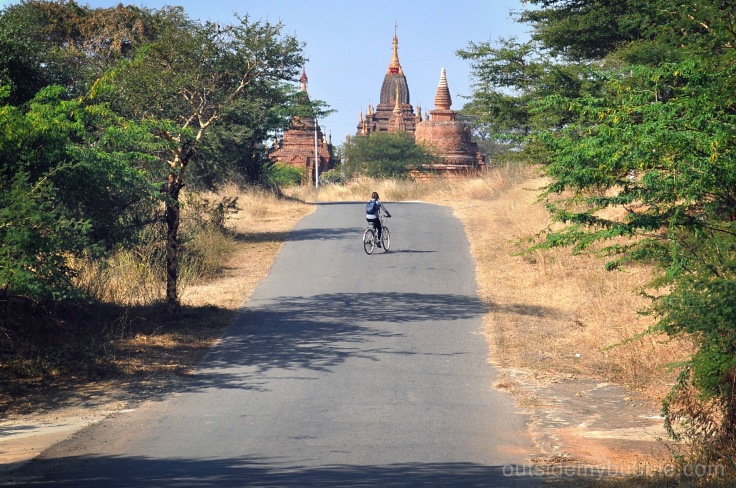


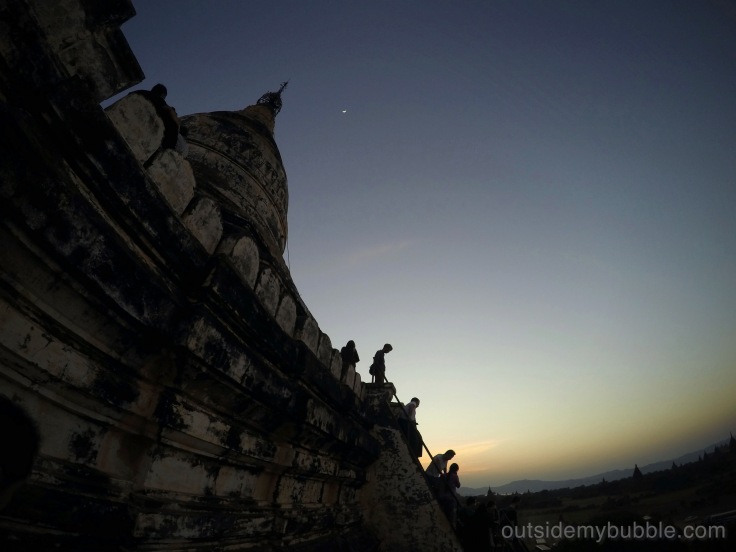
At this point I (Mariana) was already suffering enough from my rhinitis and decided to buy a surgical mask for cycling around the dusty roads. I know, a bit strange, like Michael Jackson visiting Brazil, but it did help a lot!
From Bagan we could take a ride in a taxi to the Mount Popa, a temple that sits on the top of a hill.

Our last destination was the city of Mandalay. Mandalay is interesting mainly as a base for exploring the surroundings and visiting the next towns which were ancient capitals.
Our trip to Myanmar was remarkable and after these three weeks we left the country with mixed feelings: a desire to stay longer (to explore other places such as Hsipaw) and to go back to certain luxuries (like western food and an internet that takes less than 10 minutes to see an email). It’s definitely a place we would love to go back.














Leave a comment